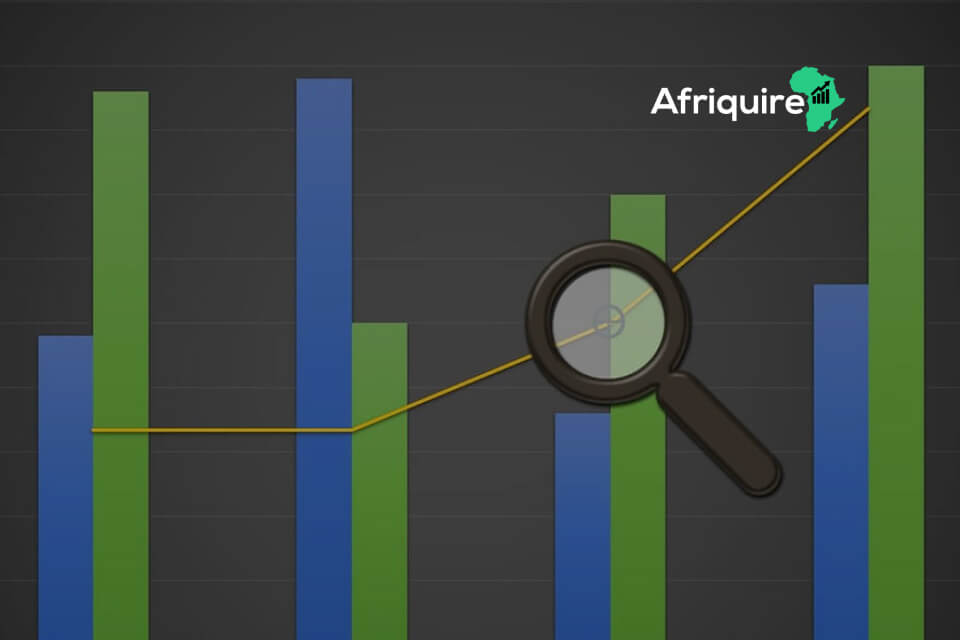- Introduction
- Definition and Characteristics of The Blue-Chip Stocks and Small-Cap Stocks
- Blue-chip Stocks vs Small-cap Stocks: Risk and Return Potential
- Market Presence and Stability: Blue-chip Stocks vs Small-cap Stocks
- Blue-chip Stocks vs Small-cap Stocks: Investment Considerations
- Blue-chip Stocks vs Small-cap Stocks: Investment Strategies and Goals
- Frequently Asked Questions (FAQs)
- Conclusion
Introduction
Choosing the right path can be daunting in the dynamic realm of stock investing. As an investor, you want your capital to grow steadily and securely. This article provides a comprehensive analysis of two prominent categories of stocks: blue-chip stocks and small-cap stocks. We will define and compare these stock types, exploring their historical perspective, risk, return potential, market presence, and investment considerations. By the end, you’ll have the knowledge needed to make informed investment decisions aligned with your financial goals.
Definition and Characteristics of The Blue-Chip Stocks and Small-Cap Stocks
Blue-Chip Stocks
Understanding Blue-Chip Stocks
When we talk about blue-chip stocks, we’re talking about the giants of the stock market. These are the large, established companies that have stood the test of time. Because they’ve earned a strong reputation for being reliable and resilient, many investors see them as safe choices. In other words, they’re the steady performers in the world of investing.
Size and Stability:
To begin with, blue-chip stocks usually come from big, stable companies. These businesses are leaders in their industries. So, when you invest in them, you’re backing companies with solid foundations and long histories of success.
Consistent Performance:
Also, blue-chip stocks often show dependable performance. They may not always deliver explosive growth, but they do offer steady returns over time. Better yet, many of them pay dividends regularly—like getting a bonus just for being a shareholder.
Lower Risk:
Finally, one of the biggest advantages is lower risk. Blue-chip stocks tend to be less volatile, meaning they don’t usually swing wildly in price. Because of this, they can offer a sense of security, especially during uncertain market conditions.
All things considered, blue-chip stocks can be a smart addition to your portfolio. Thanks to their size, consistency, and reduced risk, they help build long-term financial strength.
Small-Cap Stocks
Looking at Small-Cap Stocks
On the flip side, we have small-cap stocks. These come from smaller companies that, as the name suggests, have a lower market value. Because of this, they’re often seen as promising and full of potential. While they might not be as well-known as blue-chip stocks, they offer exciting chances for growth.
Smaller Companies:
First of all, small-cap stocks belong to companies that are still growing. Think of them as the startups or young talents in the business world. They might not have the size or stability of bigger firms, but they are often more agile and innovative.
Potential for Growth:
Moreover, what makes small-cap stocks so intriguing is their potential to grow fast. Although they can be more unpredictable and riskier, they also offer the possibility of bigger returns. In other words, investing in small-cap stocks can sometimes mean catching the next big success story early.
So, while small-cap stocks come with extra risk, they also bring extra opportunity—making them a key part of many growth-focused portfolios.
Historical Perspective
Putting Blue-Chip and Small-Cap Stocks in Perspective
To truly understand the value of blue-chip and small-cap stocks, think of it as taking a journey through time. On one hand, blue-chip stocks have been the backbone of the market for decades. In fact, they’ve stood strong through economic ups and downs. Companies like Coca-Cola and IBM are perfect examples—they’ve built trust over the years by consistently performing.
On the other hand, small-cap stocks are the fresh faces. These are often newer, more innovative companies that are just starting to make their mark. Because they focus on fresh ideas and bold strategies, they’re sometimes seen as market disruptors.
By looking at this contrast, you can better understand where each type of stock fits into today’s market. So, while blue-chip stocks offer history and stability, small-cap stocks bring energy and growth potential. Together, they help paint the full picture of smart investing.

Blue-chip Stocks vs Small-cap Stocks: Risk and Return Potential
The Blue-Chip Stocks
Think of blue-chip stocks as the dependable choice in the stock market. Investors like them because they come with less risk, which is like having a safety net. They may not make your wealth skyrocket overnight, but they are like steady, experienced professionals who remain calm even when the market gets chaotic. So, while the returns may not be sky-high like those roller-coaster small-cap stocks, blue-chip stocks offer a safe and steady ride, like a harbour in a storm.
Small-Cap Stocks
On the other hand, small-cap stocks are a bit like the adventure seekers in the stock market. They are known for taking more risks, similar to the thrill-seekers who love extreme sports. Their size and sometimes unproven track record make them more unpredictable. However, the exciting part is that they have the potential for explosive growth. If you’re not afraid of a bit of turbulence and you’re planning for the long term, small-cap stocks can be like treasure hunts, offering the possibility of significant rewards.
Market Presence and Stability: Blue-chip Stocks vs Small-cap Stocks
Blue-Chip Stocks
Blue-chip stocks are the seasoned pros of the market. They’ve been around for ages and have seen their fair share of ups and downs. They’re like the trusted, reliable brands you’ve known for years. Their stability is reassuring, much like having an experienced guide by your side. This sense of reliability is a magnet for investors seeking consistent performance.
Small-Cap Stocks
Small-cap stocks are more like nimble startups in the market. They’re quick on their feet and ready to adapt to change. This agility can lead to impressive growth, like watching a young athlete break records. However, with this flexibility comes a bit of instability. It’s a bit like riding a roller coaster; you get the thrilling ups, but you also experience the occasional drops. So, while small-cap stocks can be very exciting, they may not be for the faint of heart.
Understanding these differences is crucial for investors because it helps them decide which path suits their financial goals and their ability to handle risk.

Blue-chip Stocks vs Small-cap Stocks: Investment Considerations
Risk Tolerance
Your risk tolerance is like your comfort level with uncertainty in the world of investments. It’s crucial in deciding whether to go for blue-chip or small-cap stocks.
If you don’t like taking big risks and prefer stability, then blue-chip stocks are like a comfortable, well-paved road. They’re less likely to surprise you with sharp turns, making them suitable for cautious investors.
However, if you’re okay with a bit of excitement and can handle some ups and downs, small-cap stocks can be like an adventurous trail. They might have some wild swings, but the potential for high returns can be thrilling.
Investment Horizon
Your investment horizon is like the timeline for your investments. Are you in it for the long haul or looking for quicker results?
Blue-chip stocks are like the patient gardener’s choice if you’re planning to invest your money and leave it to grow over many years. They steadily provide returns and are a bit like planting a tree that will give you fruits for years to come.
On the other hand, if you’re willing to wait for some time for your investments to grow, small-cap stocks can be like planting fast-growing seeds. They might take a while to turn into tall trees, but they can provide an impressive harvest when they do.
Financial Goals
Your financial goals are like the destinations you want to reach with your investments. They play a significant role in helping you decide which type of stocks to choose.
Blue-chip stocks are like a sturdy vehicle that can take you far and wide if you’re saving for retirement, looking to accumulate wealth over the years, or working on a long-term financial project.
However, if you have specific short-term financial goals and can manage some ups and downs, small-cap stocks are like agile athletes who can sprint towards your targets.
In a nutshell, it’s all about matching your risk tolerance, investment horizon, and financial goals with the characteristics of blue-chip or small-cap stocks. Remember, there’s no one-size-fits-all answer; what works best for one person might not be the right choice for another.

Blue-chip Stocks vs Small-cap Stocks: Investment Strategies and Goals
Diversification
Diversification is like having a variety of tools in your financial toolbox. It’s a smart strategy to help you manage the ups and downs of the stock market.
Imagine you’re a chef, and instead of relying on just one ingredient for a dish, you have a whole range of options. This way, if one ingredient doesn’t taste great, the others can make up for it. Diversification works similarly with investments.
Combining both blue-chip and small-cap stocks in your investment mix is a bit like having a mix of tried-and-true recipes and some exciting new dishes. This balance helps you stay on course even when the financial “flavours” in the market change.
So, when the market gets a bit rocky, your diversified portfolio is like having a sturdy table with many legs – it doesn’t wobble as much.
Long-Term vs. Short-Term Goals
Your investment goals are like the destinations you’re trying to reach on a financial journey. They can be either short-term or long-term.
Long-term goals are like planning for a big trip you’re taking next year. You want to have a strong and reliable vehicle to get you there, even if it’s not superfast. Blue-chip stocks are like this reliable vehicle; they’ll provide a comfortable ride over the long haul.
On the other hand, if you’re planning for a more extended expedition in a few years, you might be open to trying a faster and more adventurous vehicle. Small-cap stocks are like the sports car of your investment journey – they might not always go in a straight line, but they can get you to your destination with some extra thrills along the way.
Frequently Asked Questions (FAQs)
1. Are there any specific industries or sectors associated with blue-chip stocks?
Blue-chip stocks can be found in various sectors, including technology, healthcare, finance, and consumer goods. They are often in well-established industries with a history of stability.
2. How can I tell if a small-cap stock has growth potential?
Evaluating the fundamental analysis of a small-cap stock’s growth potential involves looking at factors like the company’s competitive advantage, market trends, and management team. It’s essential to research thoroughly before investing.
3. Can I invest in the same portfolio of blue-chip and small-cap stocks?
You can create a diversified portfolio by combining blue-chip and small-cap stocks. This strategy can provide a balance between stability and growth potential.
4. Do small-cap stocks pay dividends like blue-chip stocks?
While some small-cap stocks do pay dividends, it’s less common than with blue-chip stocks. Small-cap companies often reinvest their profits for growth.
5. Are there any tax implications I should be aware of when investing in blue-chip or small-cap stocks?
Tax implications can vary depending on your country and the specific stocks you invest in. It’s advisable to consult with a tax professional or financial advisor to understand your tax obligations and potential advantages.
Conclusion
In conclusion, the choice between blue-chip and small-cap stocks is not a one-size-fits-all decision. It depends on your risk tolerance, investment horizon, and financial goals. The key is to align your investment strategy with your unique circumstances. Blue-chip stocks offer stability and consistent returns, while small-cap stocks present exciting growth potential. By understanding both nuances, you can create a diversified portfolio that caters to your financial objectives.
Your investment journey begins with knowledge and informed decisions. Choose wisely, and may your investments thrive.



